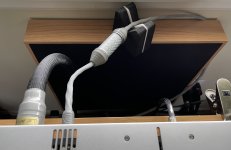my understanding of the MSB pro-ISL / pro-USB input is that it provides for both 100% electrical isolation AND data integrity where the USB signal is subjected to error detection and correction. so, this makes the pro-ISL / pro-USB interface functionally equivalent to optical fiber ethernet input.
in this case, i cannot see how the choice of USB cable connected to the input side of the pro-USB dongle matters in the least.
of course, the (subjective) proof of this would be blind A/B testing of a consumer grade USB cable and an audiophile USB cable.
more info on the MSB pro-ISL / pro-USB input at this link
as always, YMMV
This is a very fair point. If the only difference between USB cables is the quantity and type of noise they let through, then you would be correct. However, I suspect there are other differences that impact the sound quality such as impedance or conductivity of the conductors of the USB cable.
Best,
Ken

